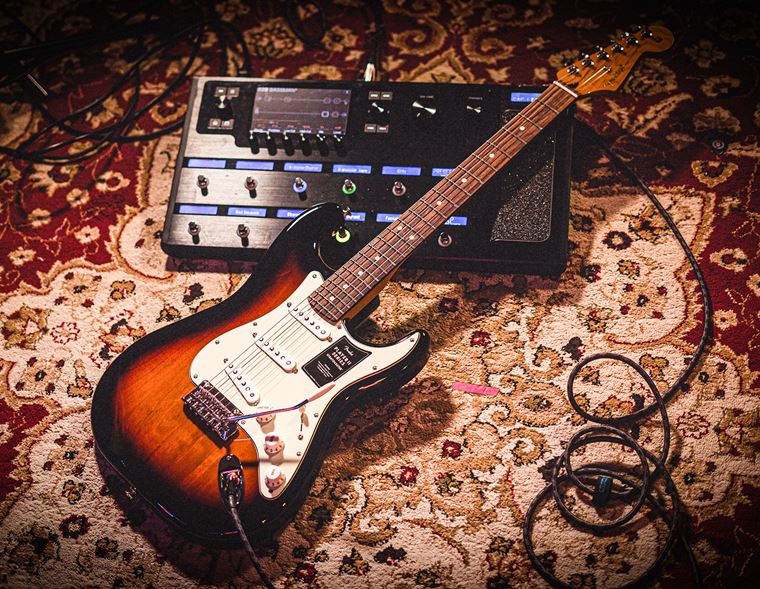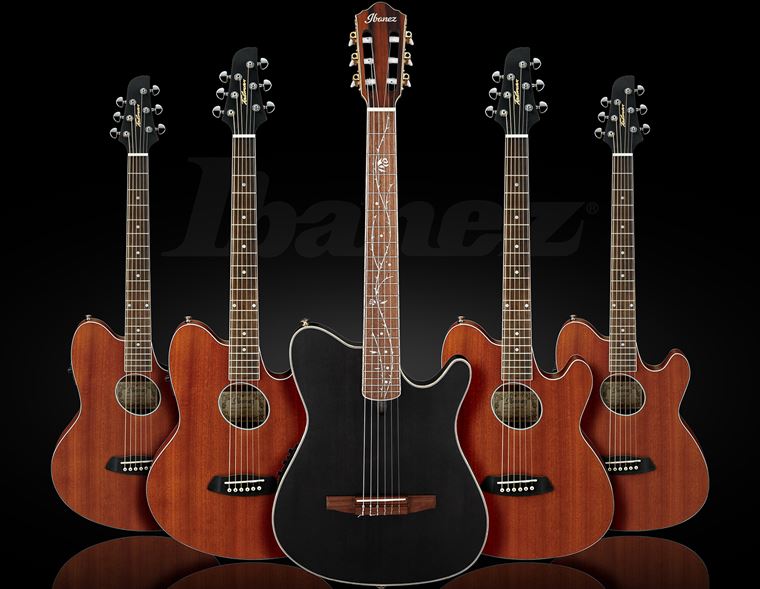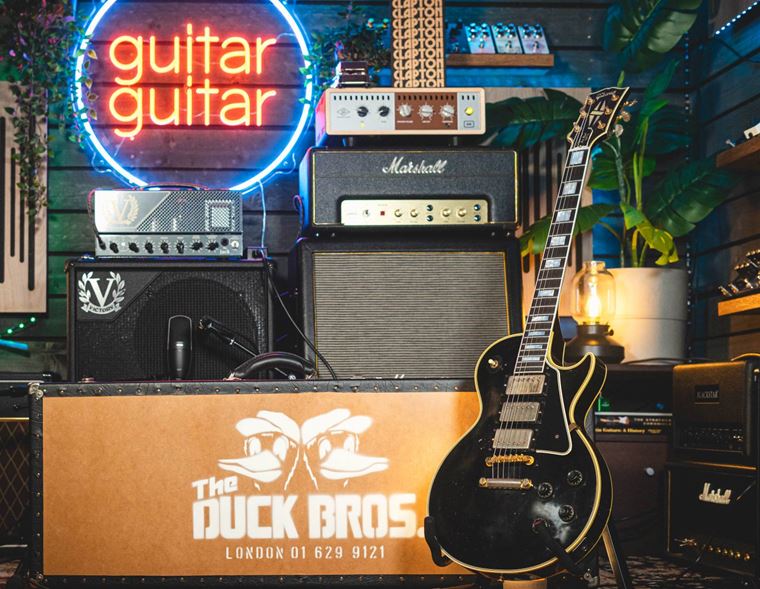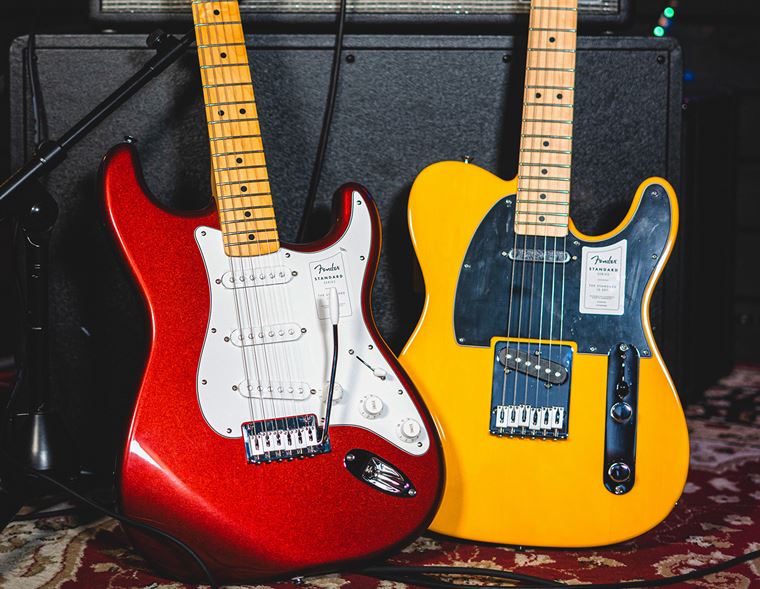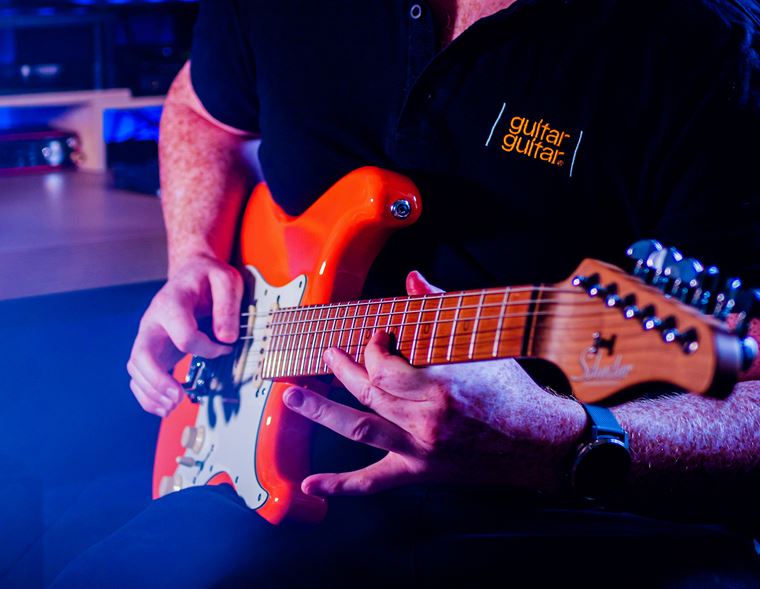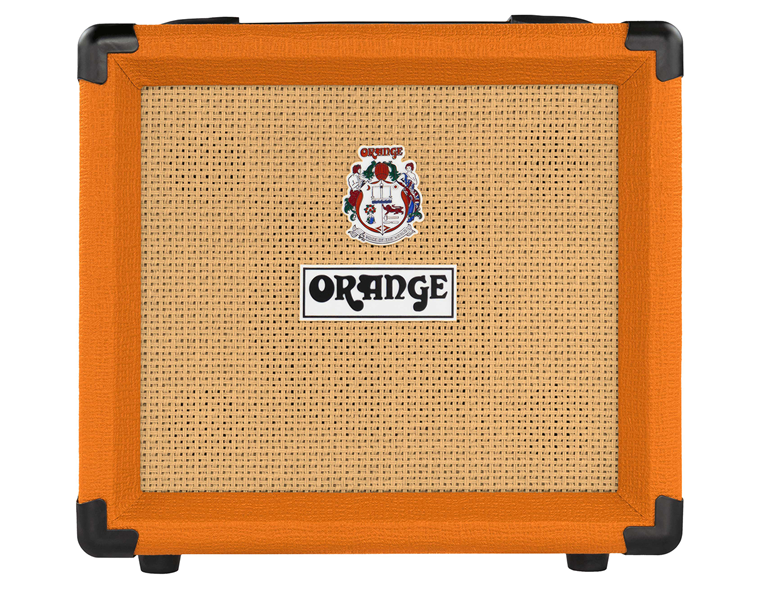Gibson SG: Your Guide to 60s, 70s & Modern Models
Published on 15 November 2024
The Gibson SG. Designed to take over from the ‘out of date’ Les Paul in 1961, Gibson’s most devilish guitar didn’t quite spell the end for Lester’s design, but it was a hit in its own right. The SG has remained in production ever since, making it 63 years young at time of writing.
When it first debuted, it was known as the ‘Les Paul SG’, with the SG part standing simply for ‘Solid Guitar’. Les Paul himself wasn’t too keen on the new shape, which was created entirely outside his influence. As a result, he asked for Gibson to discontinue his one dollar royalty on every guitar sale, and his name was removed from all subsequent SG models. Obviously, the Les Paul remained the Les Paul!
Today, my aim is to check out some of the changes the SG went through from its inception up until today. I’ll address the 60s, the 70s and the modern era, and discuss certain popular questions on subjects like weight and relative value. I’d also say that today’s SGs are particularly good and shouldn’t be ignored in favour of vintage guitars, unless you’re buying as an investment. If you’re a player, it’s a good time for an SG!
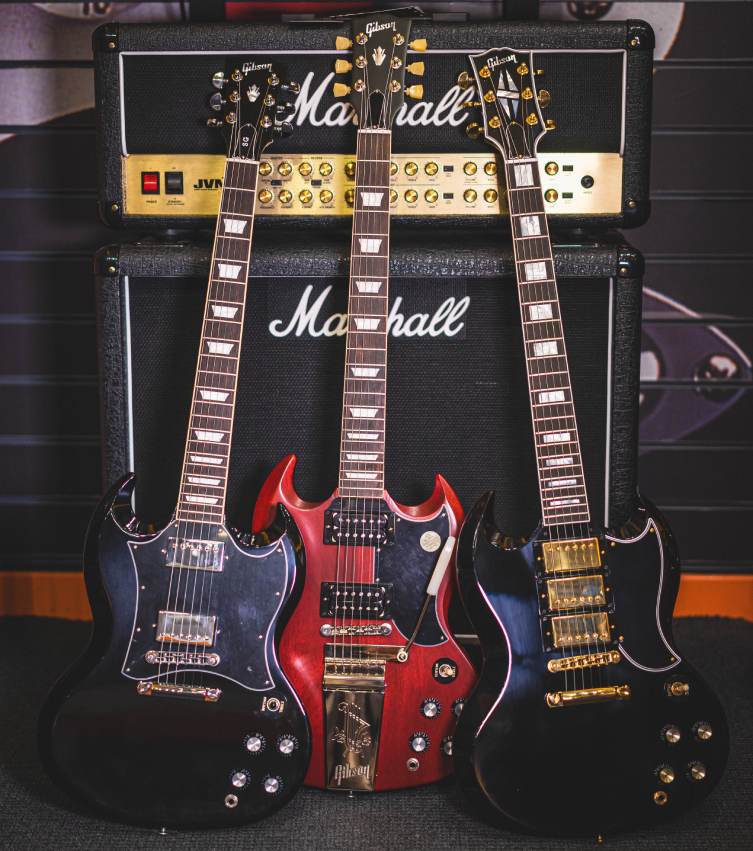
Contents
What Does a Gibson SG Sound Like?
Why are 60s SGs Worth So Much More Than 70s SGs?
The Weight Difference of Vintage and Modern SG Guitars
The Gibson SG: A Timeless, Versatile Classic
What is the Gibson SG?
What is the SG? The Gibson SG is a solid body electric guitar with a thin mahogany body, set neck and a ‘devil horn’ shape that allows for very easy access to the upper frets. The SG is made in Nashville, Tennessee in the USA, just like all Gibson USA guitars. Before 1976, they were made in Kalamazoo, Michigan. Epiphone SG guitars (the official replicas) are made in China.
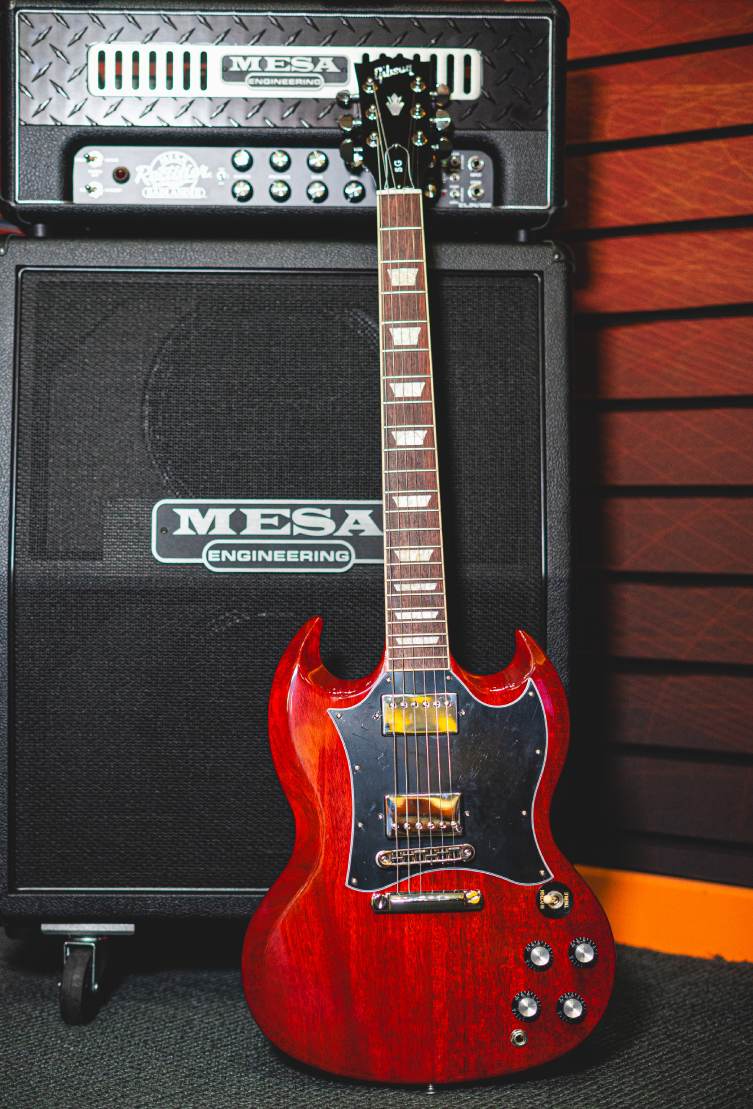
The SG shares many details with other Gibson guitars such as the Les Paul which of course preceded it by 9 years. Here are the features common to both models:
- 24.75” scale length neck with 22 frets
- Mahogany body and neck
- Set neck construction
- Tune-o-matic bridge
- Nitrocellulose lacquer finish
The SG’s body is thinner than the likes of a Les Paul, and is always solid whereas some Les Pauls have ‘weight relief’ inner holes, sometimes called ‘tone chambers’. I’m comparing the two purely because they are Gibson’s two most popular guitars, and they share a few similarities.
What Does a Gibson SG Sound Like?
Sonically, lots of guitarists would say that the SG has a tighter bottom end than the famously fat tone of the Les Paul. In my experience, it depends on a few factors (your amplifier, for one thing!) and the SG’s sound is actually very comparable to the Les Paul. Loads of hard rockers and metal guitarists choose the SG, so it’s hardly lacking in oomph, put it that way!
The other side of that coin means that many players prefer the clean tones from an SG over a Les Paul’s. The tighter bottom end allows more high frequencies out, so there’s perhaps a more pleasant clean tone to be had.
Sustain is something that all Gibson set-neck guitars excel at, and the SG is no different. Again, I don’t want to keep comparing it to the Les Paul since they are different guitars, but the SG - whilst maybe not matching the endless sustain and sheer midrange beef of an LP - has plenty of singing sustain and harmonic richness, thanks to its mahogany neck & body, and set neck. It’s actually an incredibly versatile guitar in terms of its sound.
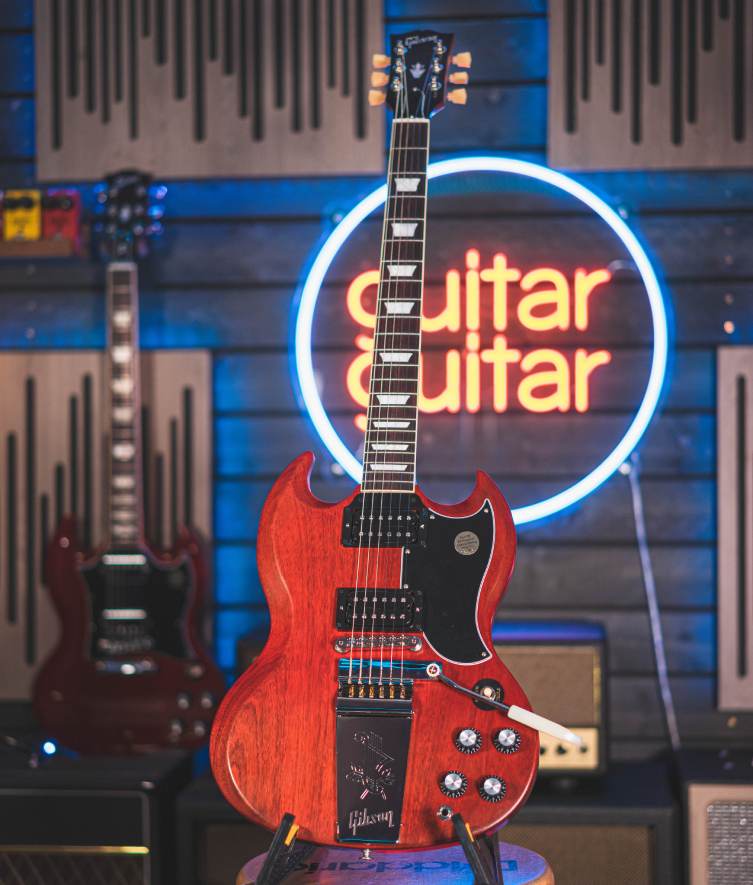
Gibson SG 60s Models
So, the Gibson SG was released in 1961 and there are a few varieties of SG to check out from this era. Here’s a brief rundown:
SG Standard: The blueprint; the original. In 1961, this had a smaller pickguard and slimmer neck than today’s SG Standard but otherwise, the legend starts here. Around 1966, the pickguard changed to the ‘Batwing style’ (not an official term but fairly obvious when you see it).

61 SG: I’m including this for context. The 61 SG is a reissue that harkens back to the original SG Standard (see above), because today’s SG Standard is based more on a slightly later 60s model, with the ‘Batwing pickguard’ and slightly fuller neck. To be clear, there was no ‘61 SG’ in the 60s, it was just an SG Standard!
SG Custom: Following the same idea as the Les Paul Custom from 1957, the SG Custom had the same decorative appointments (bigger headstock with split diamond inlay, multiple ply binding, block fingerboard inlays, ebony fingerboard etc) and also sported three humbuckers. As with nearly all Gibson guitars, this spec changes from year to year and decade to decade, but for the ‘definitive’ SG Custom, it’s a cream finish and three humbuckers!
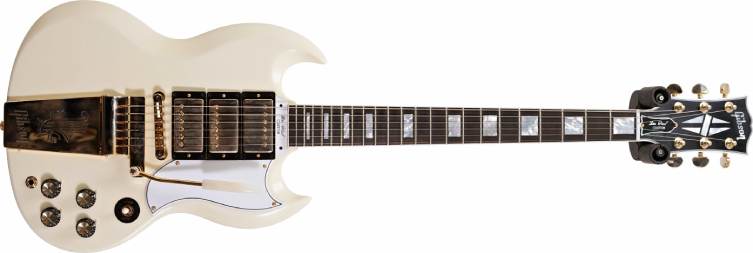
SG Junior: As with the Les Paul, the SG was offered in a stripped down take, with a single P90 pickup, fewer controls and no binding. Also with the Les Paul, the SG Jr, whilst designed to be a cheaper ‘student’ model (the term is bewildering), it has found favour with pro guitarists who enjoy the simplicity of the design.
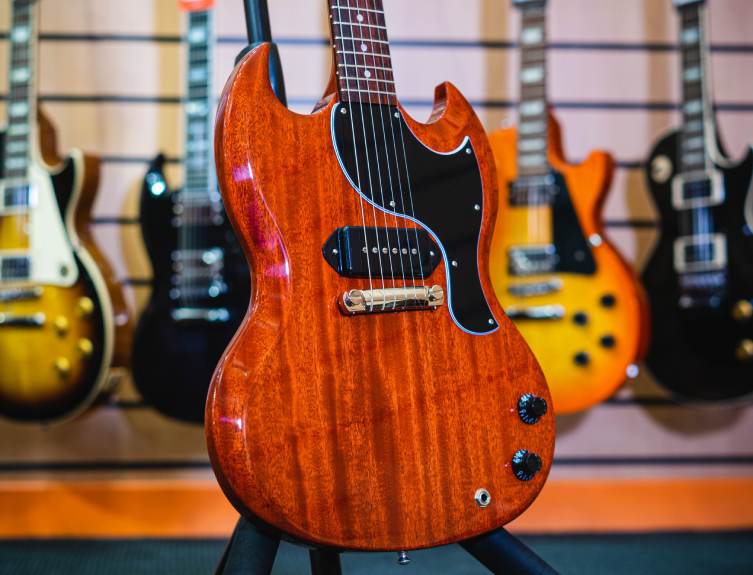
SG Special: Again, following the blueprint of the Les Paul releases, the SG Special is like an SG Junior but with two P90 pickups and binding along the fingerboard. Doors fans: this is the model you want to get if you love Robby Krieger’s sound!
Gibson 70s Models
Guitar companies with a lot of history like Gibson like to retrospectively apply decade divisions into their heritage: 60s models were like this; 70s models were like that; and so on. The reality isn’t quite so neat, since changes, revisions and new features were brought about quite often and irregularly.
That said, it does make the whole subject easier to talk about, and there are certain things that can be applied to certain times, so let’s look at the 70s and what they broadly meant for the SG.
In 1969, Gibson were bought by CMI (Chicago Musical Instruments) and remained theirs until 1984. Without getting mean about it, this is not an era that is wildly loved by Gibson aficionados. Corners were cut, designs altered in some very odd ways,and quality control sank pretty low. Now, that’s not to say that some excellent guitars didn’t come out of GIbson during this period - there definitely were - but let’s say that the era is not as widely revered as the 60s, to put it diplomatically. I’ll be relatively general here in terms of details, since there was actually a lot of change during this period, so take this section as your launching pad to further investigations, if you find yourself interested!
SG Deluxe: from 1971-72, Gibson did some odd things with the SG, such as putting a Les Paul-style raised pickguard on it, and sticking the control knobs onto a pickguard plate rather than directly onto the body. This guitar was called the SG Deluxe and actually replaced the Standard. After a year, things returned to almost normal, except the neck was now joined to the body slightly further in, making that famous upper fret access less than what it was.
SG Pro: The SG Pro was supposed to replace the SG Special as the company’s two-P90 model. As with the Deluxe, there were many features on this design that proved controversial: the control panel, the volute (one of the rare things from 70s Gibson that I’m personally in favour of) and the zero degree pitch to the neck. So much of what gives the SG (and the Les Paul) that distinctive feel is the slight backwards pitch of the entire neck, and so taking that away was a move that proved unpopular.
SG-100 and SG-200: These new beginner models looked ill-designed, with offset single coil pickups (one in the neck for the SG-100, two for the SG-200) and a very un-Gibson bridge making these guitars pretty ugly looking hodge-podges of what were once elegant designs.
Why are 60s SGs Worth So Much More Than 70s SGs?
I won’t beat about the bush: none of those 70s variants and versions of the SG are what people are looking for, generally speaking, when they hunt for a Gibson SG. They don’t want odd control plates; they don’t want Les Paul-style raised pickguards on the SG; and the cheaper SG-100 and 200 models simply have none of the inherent coolness of the 60s SG Junior or Special.
I understand that there’s subjectivity involved here, but it seems to be pretty much a consensus amongst Gibson players, collectors and guitar fans in general: 70s SGs are less desirable than those of the 60s because the blueprint was messed around with too much, and the results weren’t better. I’m sure some 70s SG Standards are great, but plenty aren’t, and certainly don’t deliver in ways that are similar to the classic 60s-era guitars.
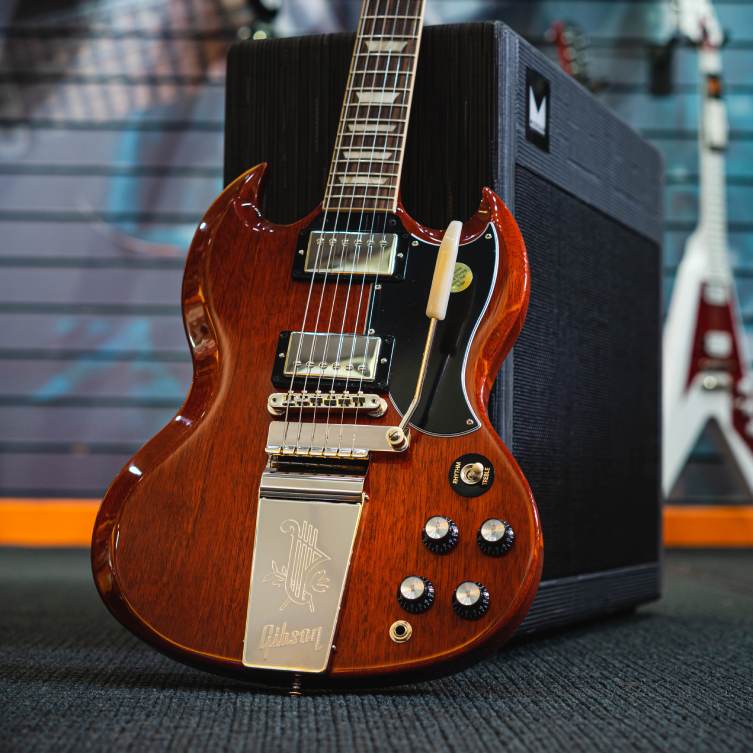
Modern Era Gibson SGs
I mentioned earlier that there have been loads of variations on the SG over the years. It’s true, and the 80s, 90s and 00s have all seen numerous versions of the model pop up. There’s rather too much to go into here, so what I’ll do is look at Gibson’s output today: the Standard choices, the reissues and the ones that are less based on historical models. Let’s take a brief skip through what’s available…
SG Standard: This is as you’d hope to find it, with a slim taper neck (slim by Gibson’s standards, so thicker than other definitions of ‘slim’), the batwing pickguard and the types of colours you’d want. Excellent!
SG Supreme: A classy and unusual take, with a contoured, arched body, 24 fret ebony fingerboard, decorative inlay work and gold hardware. It’s very fancy, and has a figured maple top, so it’s actually quite ‘un-SG’ but in a way that works well.

SG Modern: Similar to the Supreme, without the carved body. The decorative bits are more ‘standard’ (trapezoid inlays etc), but it does have 24 frets, an ebony board and an AA flame top. Traditional? No, but pretty cool if you’re a modern player. Available in unusual (for SGs) colours too, so a good one to make a mark with!

SG 61: I mentioned this earlier: it’s harkening back to the early days with a smaller pickguard and a slim neck.
SG Special: Two P90 pickups, dot inlays and a wraparound bridge make this nod to the 60s models pretty darn accurate.
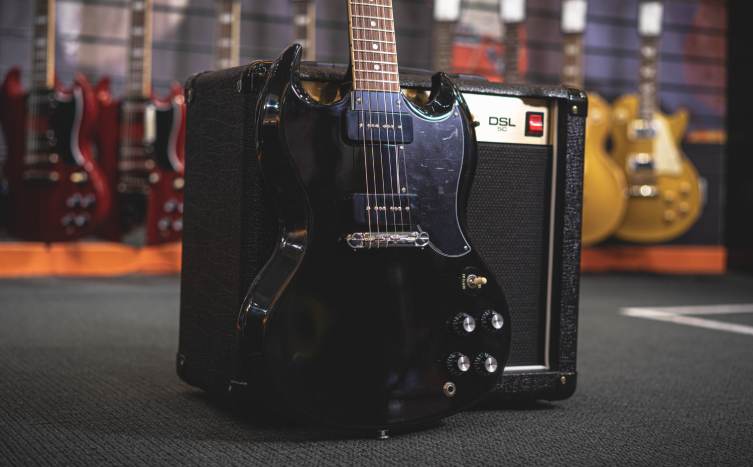
Custom Shop Murphy Lab: These are the top end creme de la creme guitars, made to be achingly precise, specific replicas of certain SG models. You’ll find Customs, 61 Standards and loads more, all masterfully built by the Gibson Custom Shop and then aged by the Murphy Lab for an impeccable vintage patina. They ain’t cheap, but they are easily the nicest Gibsons - new, vintage or otherwise - that I’ve laid eyes and ears on.
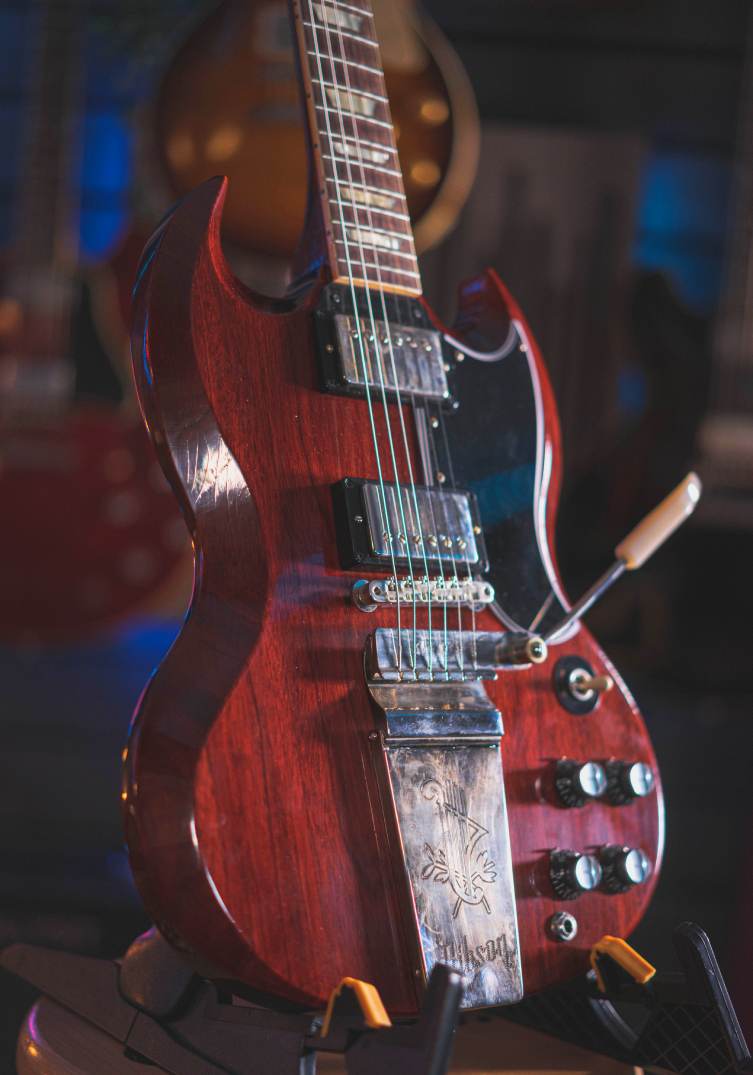
The Weight Difference of Vintage and Modern SG Guitars
Do you hear a lot of talk about the weight of SGs? Even though they are skinnier than their Les Paul siblings, there’s a lot of chat online about it, and some folks can get very fussy.
Gibson SGs are typically light in weight. Some players choose them precisely for this reason. Others like a heavier SG because of a phenomenon known as ‘neck dive’: SGs tend to be ‘headstock heavy’ and can sometimes slide on your shoulder towards the ground. Heavier ones will do this less, though let’s be fair: get a strap with a bit of texture on the underside and you're likely to be fine.
Anyway, is there a difference between the weight of vintage SGs and modern ones?
Yes and no. Sorry, but there can’t be a definitive answer here! I’ve found SGs to vary as wildly in weight as Les Pauls, and without the advantage of tone chambers either, since SG bodies are too skinny. Guitars with mahogany bodies have always fluctuated in their weight, as this is just a factor of the timber itself.
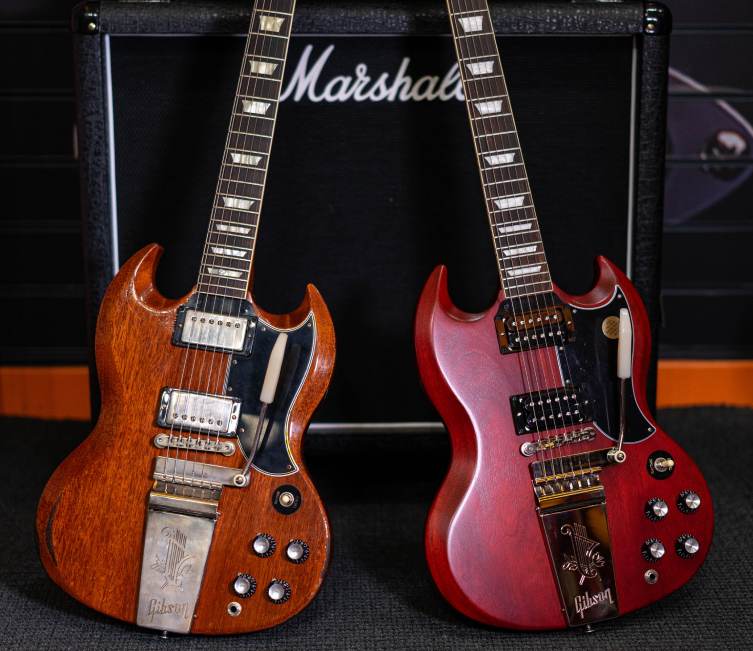
It could be the case that SGs are generally slightly heavier these days, but that’s not really a realistic subject to pursue. There could also be some truth in opinions that state that older SGs have ‘dried out’ and are hence slightly lighter than they were when new, but personally, I sense more than a hint of snake oil in statements like those. Has anyone really taken periodic weight measurements of the same guitar for sixty years? Haha! Some people also say that Sunburst Les Pauls weigh more than single colour models due to the extra coats of paint required for the burst. No way, folks. Sorry, but no way! People on forums can get really carried away.
The bottom line here is this: SGs do not weigh much at all, as far as electric guitars go. They never have. Even a ‘heavy’ one is noticeably lighter than many other guitars. Much like obsessing over the number of coil windings inside a vintage PAF humbucker, caring too much about the weight of a guitar (past the initial ‘is this too heavy for me’ qualification) is drifting away from important stuff like sound and feel. In other words, don’t worry about the weight of a Gibson SG!
The Gibson SG: A Timeless, Versatile Classic
The SG has stood the test of time well. Since 1961, it has never been out of production, and it has been played by everyone from Frank Zappa to Max Cavalera. It’ll do ‘clean’ better than you think and its heavier tones are world renowned. If you’ve overlooked the SG as being a one-trick pony rock axe, then it’s time you addressed your error!
60s models and reissues thereof are the ones that most people prefer, and the public seems to like both humbuckers and P90s on their SGs. Plug a few in for yourself and see how your playing comes alive on a Gibson SG.
Click to View our Selection of Gibson SG Guitars


